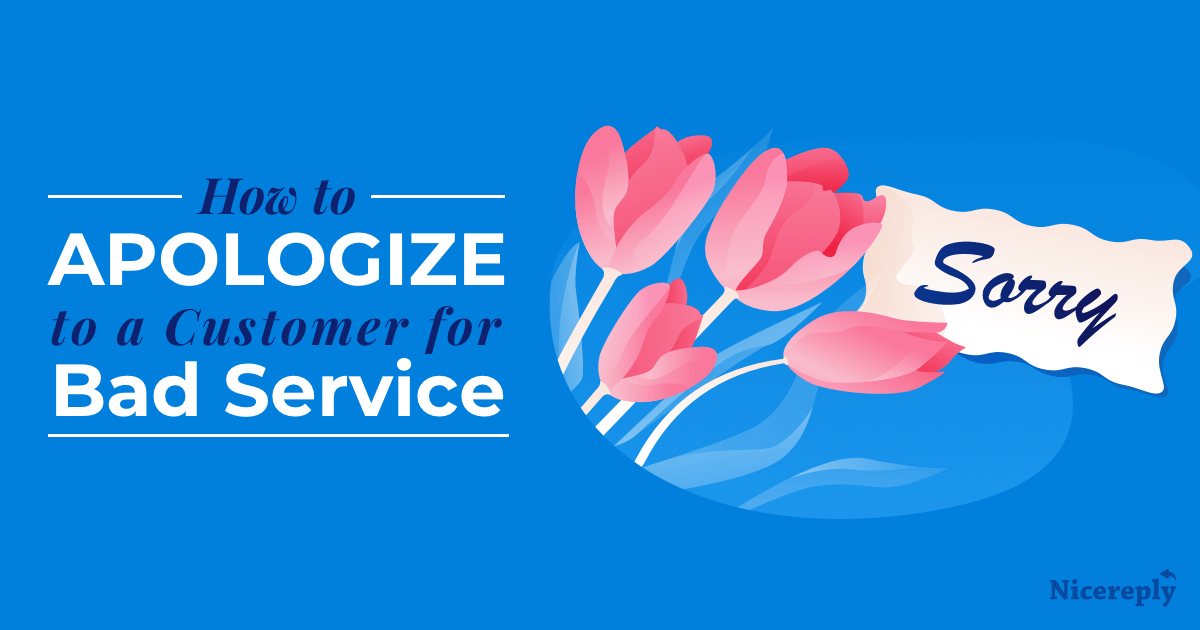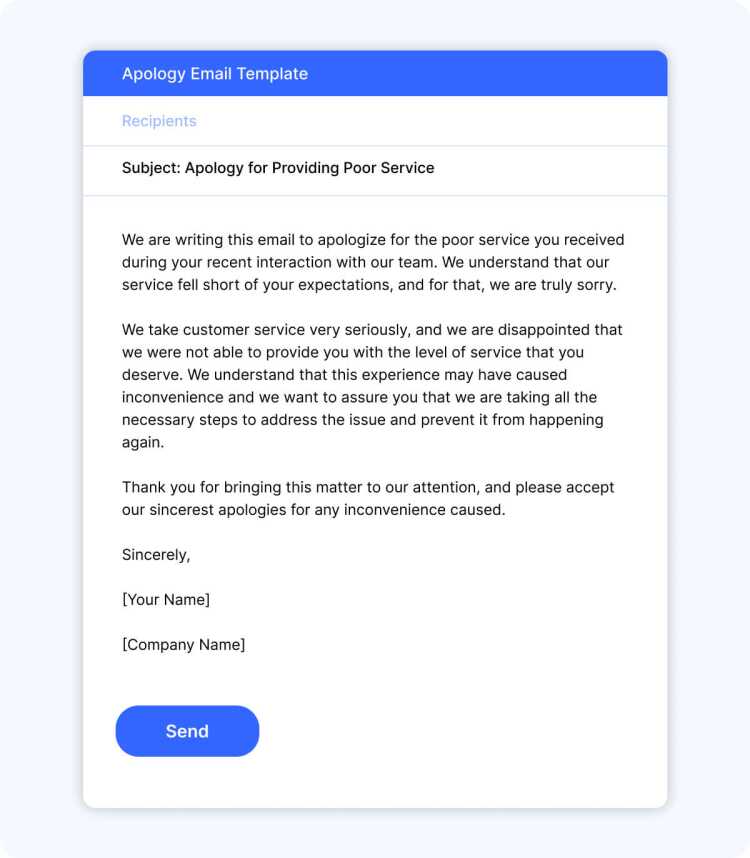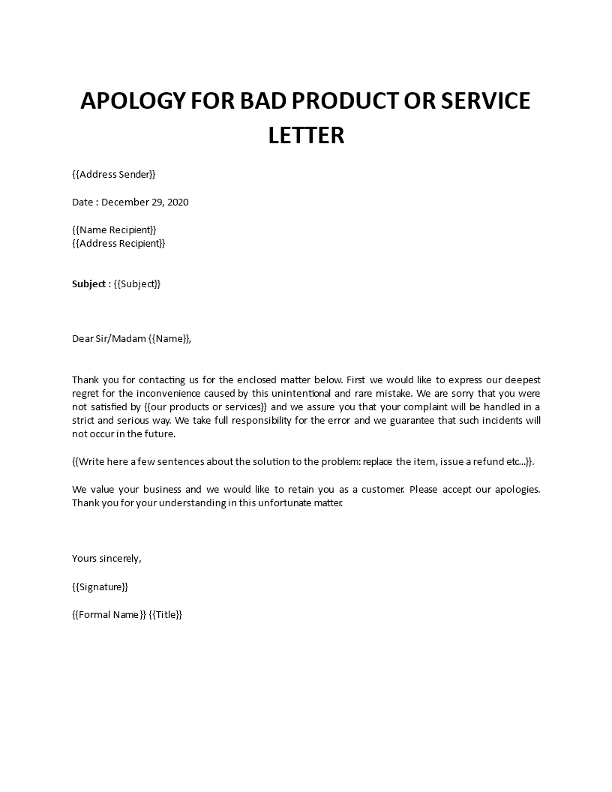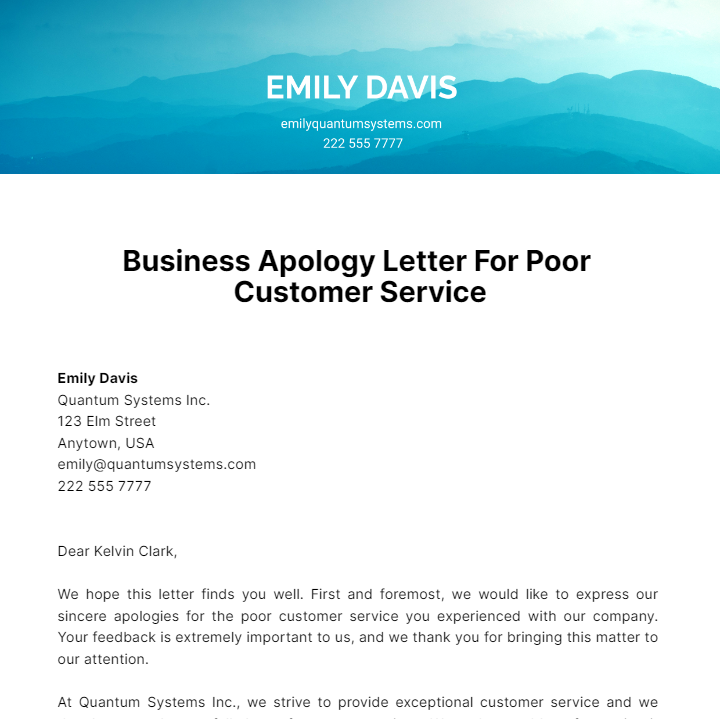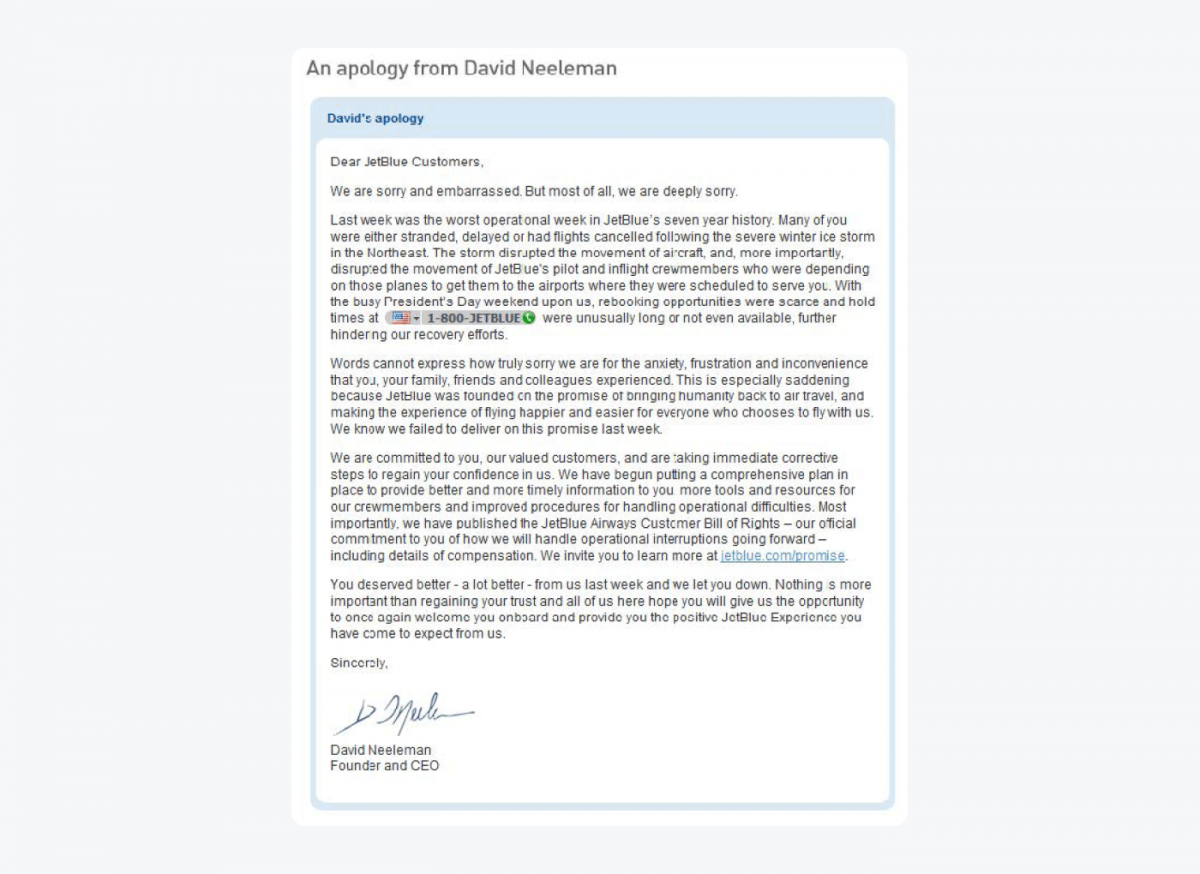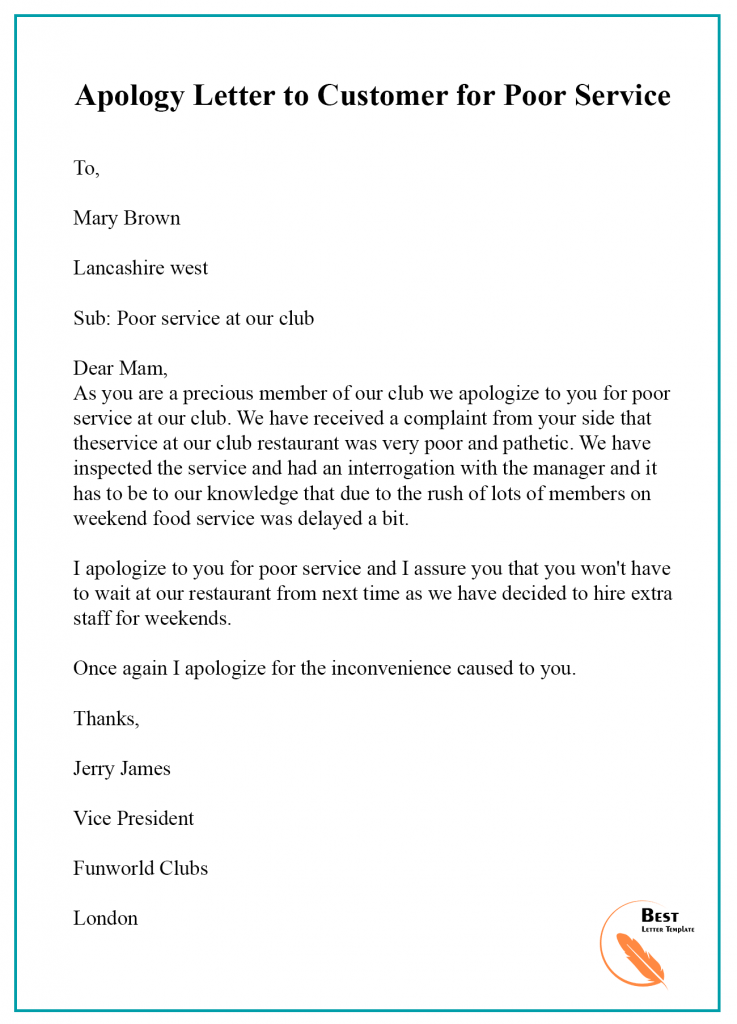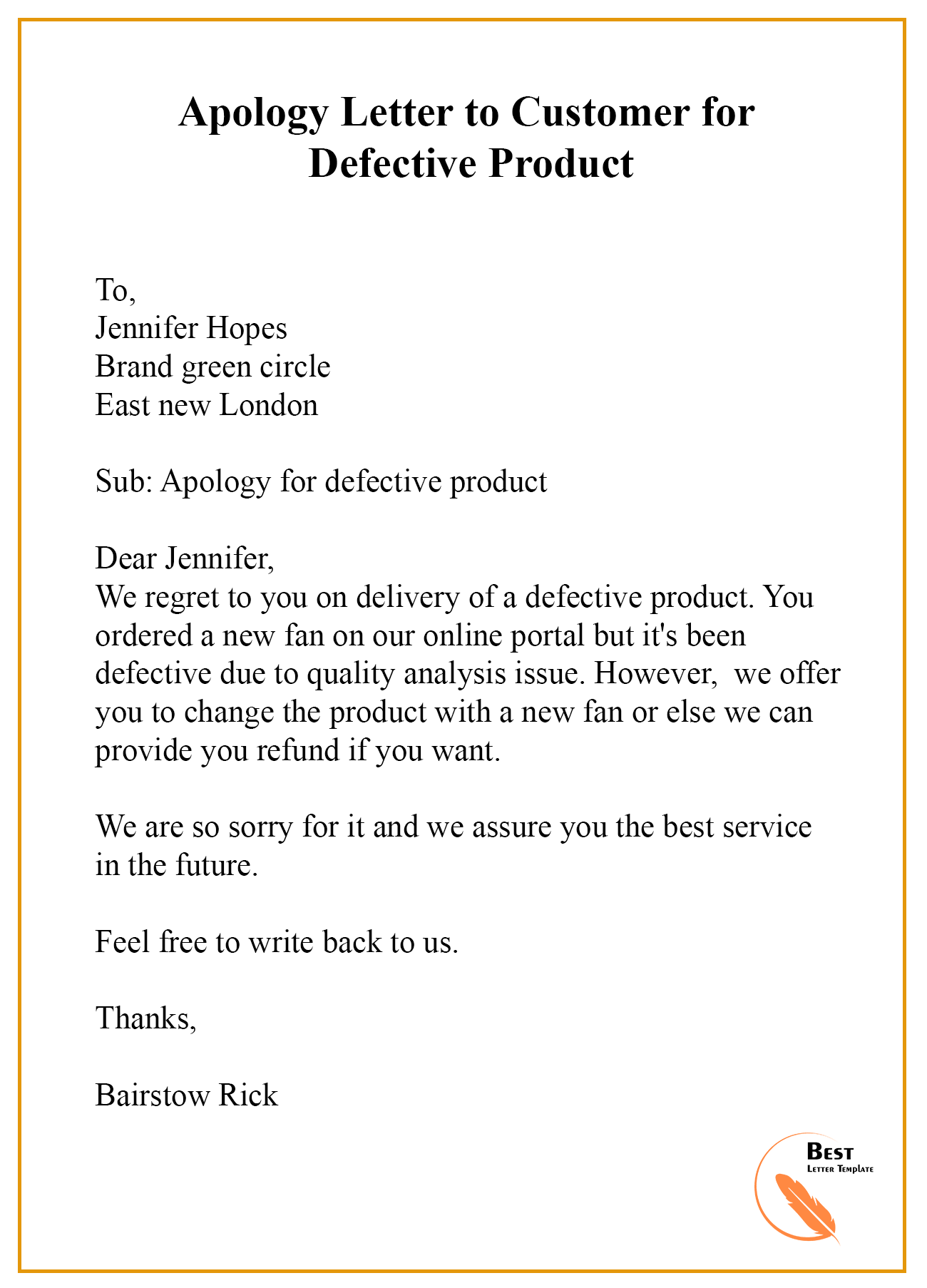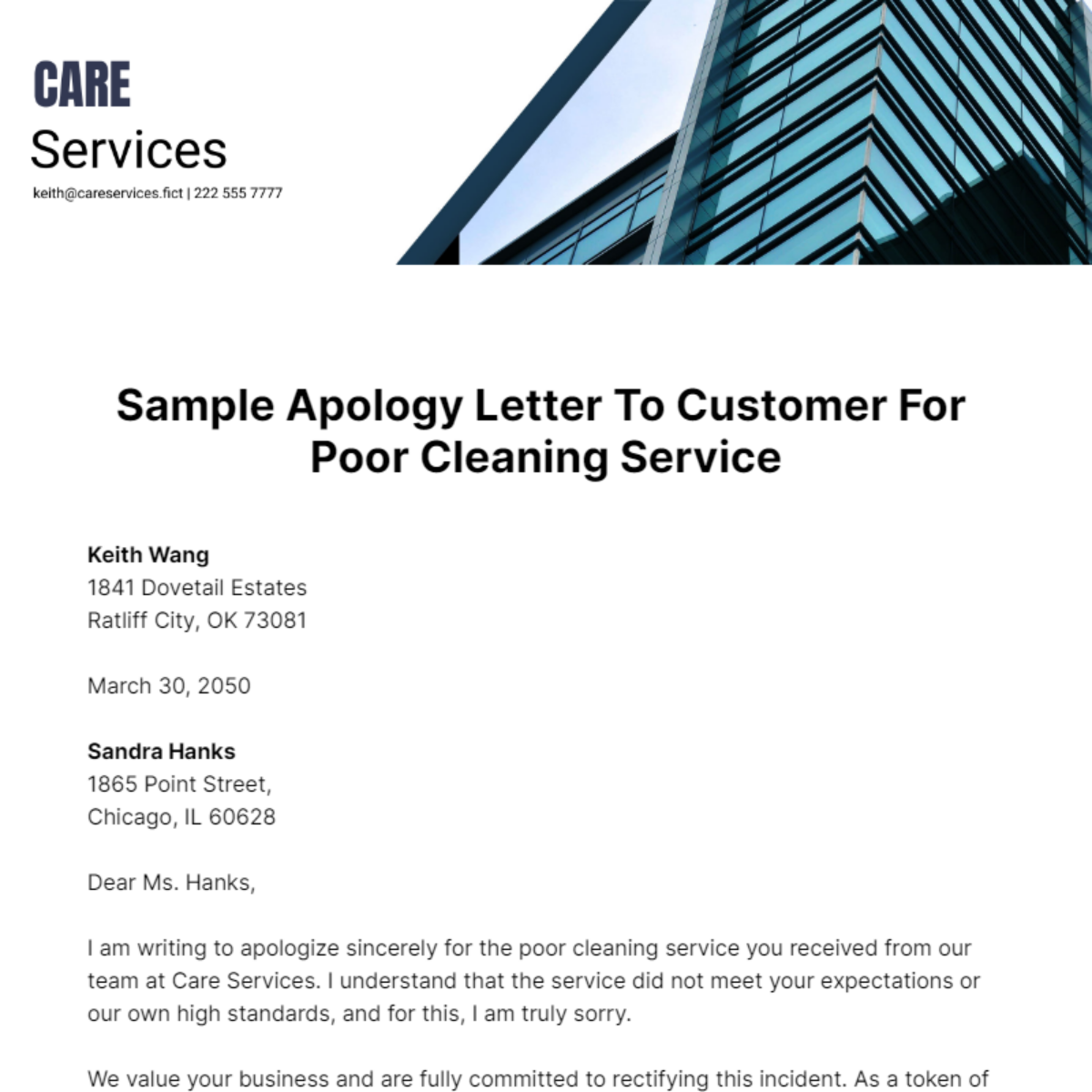How To Apologize To A Customer For Bad Service
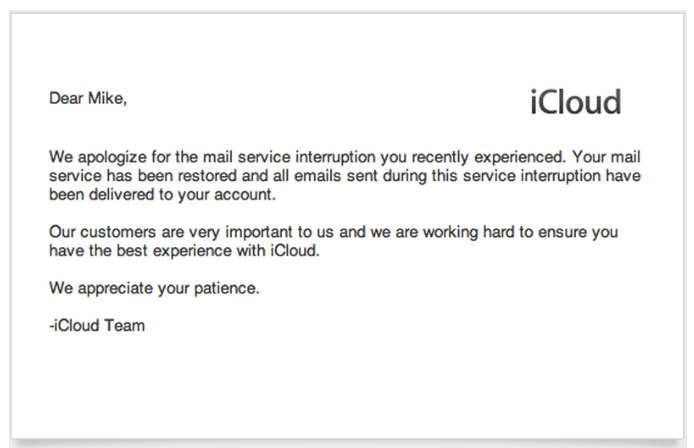
Imagine Sarah, a loyal customer, fuming after waiting an hour for her food, only to receive the wrong order, cold. The manager, noticing Sarah’s distress, approaches with a genuine expression. What happens next can either salvage the relationship or permanently damage it. This scenario, playing out in countless businesses daily, underscores the critical importance of a sincere and effective apology.
At its core, a good apology isn't just about saying "sorry." It's about demonstrating empathy, taking responsibility, and offering a solution to restore customer trust. Mastering this art is crucial for businesses aiming to maintain customer loyalty and a positive reputation. Effective apologies transform potentially negative experiences into opportunities for stronger customer relationships.
Understanding the Anatomy of a Great Apology
Acknowledge the Mistake: Don’t beat around the bush. Clearly state what went wrong.
For example, “I understand that you received the wrong order and that it took much longer than expected.”
This shows the customer you understand their frustration.
Express Sincere Regret: A genuine apology conveys empathy. Avoid sounding robotic or insincere.
Phrases like "I’m truly sorry for the inconvenience" or "We deeply regret that you had this experience" are a good start.
Let your voice and body language reflect your sincerity.
Take Responsibility: Avoid blaming others or making excuses. Own the mistake.
Even if multiple factors contributed, focus on what *you* can control moving forward.
Statements such as "We made a mistake and we take full responsibility" can be powerful.
Offer a Solution: A proactive solution demonstrates your commitment to making things right. This might involve a refund, a discount, or a complimentary service.
It shows that you value the customer's business.
Ensure that the solution is appropriate to the situation.
Follow Up: After offering a solution, follow up to ensure the customer is satisfied.
A brief phone call or email shows that you care about their experience beyond the initial apology.
It also provides an opportunity to gather feedback and prevent future issues.
The Importance of Empathy and Active Listening
Empathy is the bedrock of a sincere apology. Try to understand the customer's perspective and acknowledge their feelings.
This means actively listening to their complaint without interrupting.
Reflect their emotions by saying, "I can see why you're frustrated" or "That sounds incredibly inconvenient."
Active listening involves paying attention not only to the words the customer is saying, but also to their tone and body language. Show genuine interest by maintaining eye contact and nodding in acknowledgement.
Ask clarifying questions to ensure you fully understand the issue.
This helps build rapport and demonstrates that you truly care about resolving their concern.
Turning Bad Experiences into Opportunities
A well-executed apology can transform a negative experience into an opportunity to strengthen customer loyalty. Customers are more likely to forgive a mistake if they feel heard, understood, and valued.
According to a study by Harvard Business Review, customers who have had a negative experience resolved effectively are more likely to become loyal advocates than those who never had a problem in the first place.
This is because a well-handled apology demonstrates a commitment to customer satisfaction that goes above and beyond.
Avoiding Common Pitfalls
Don't Make Excuses: Avoid blaming employees, suppliers, or external factors. Excuses sound defensive and insincere. Focus on owning the mistake and offering a solution.
Don't Be Defensive: Even if you believe the customer is partly responsible, avoid getting defensive. Focus on understanding their perspective and finding a way to resolve the issue.
Don't Promise What You Can't Deliver: Be realistic about what you can offer as a solution. Making promises you can't keep will only exacerbate the situation.
Empowering Employees to Apologize
It's crucial to empower your employees to apologize effectively. Provide them with training on how to handle customer complaints with empathy and offer appropriate solutions.
Encourage them to take ownership of mistakes and offer personalized apologies.
This will create a culture of customer-centricity within your organization.
Ultimately, a sincere apology is an investment in your customer relationships and your brand's reputation. By mastering the art of the apology, businesses can turn potentially damaging experiences into opportunities to build lasting loyalty.
So, the next time a customer like Sarah faces a service failure, remember that your response can make all the difference.
A heartfelt apology, coupled with a genuine effort to make things right, can not only salvage the situation but also create a customer for life.

